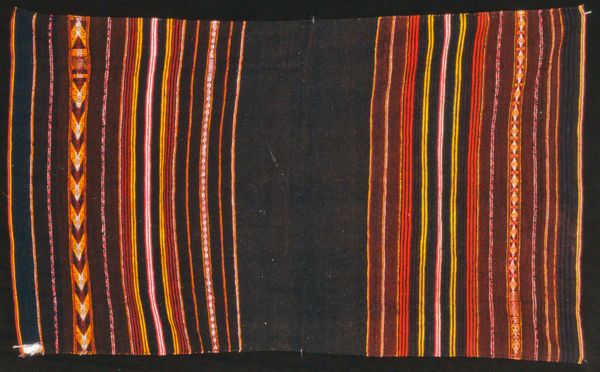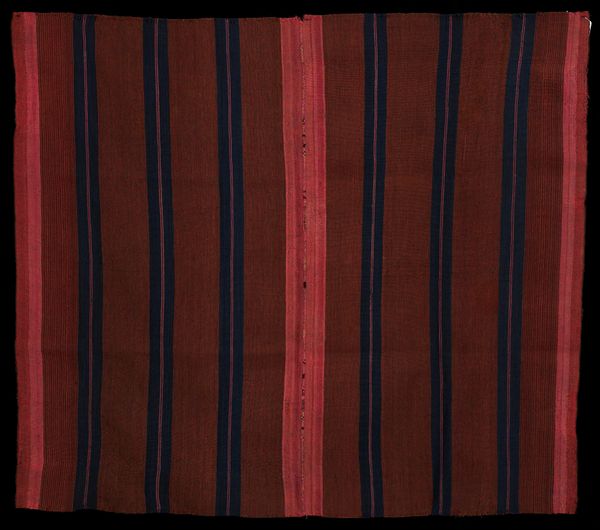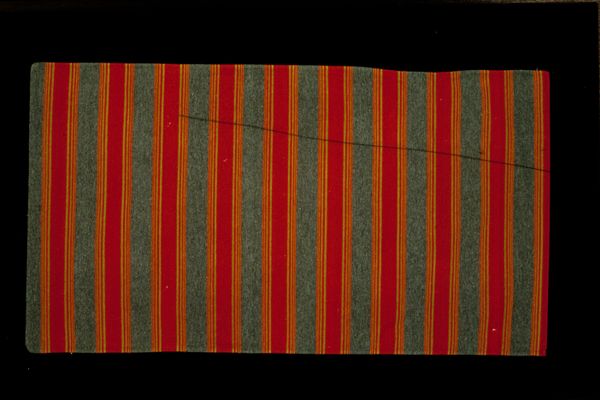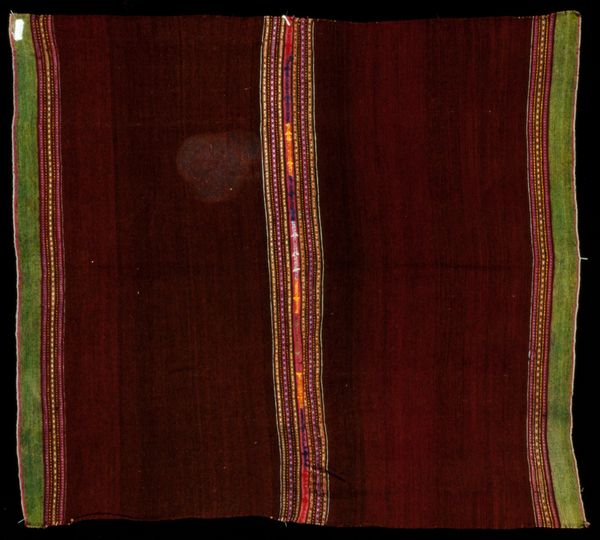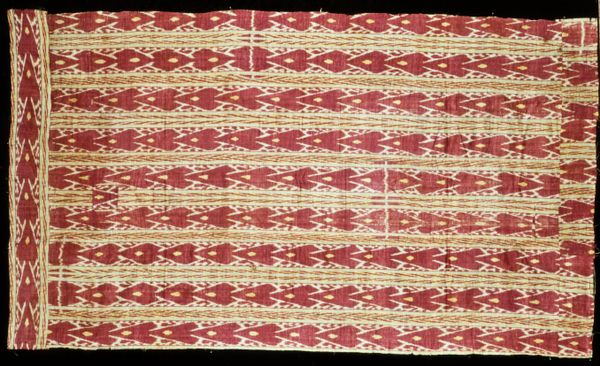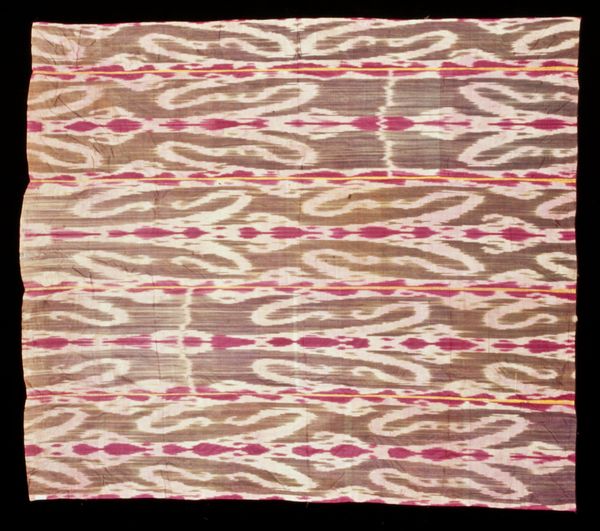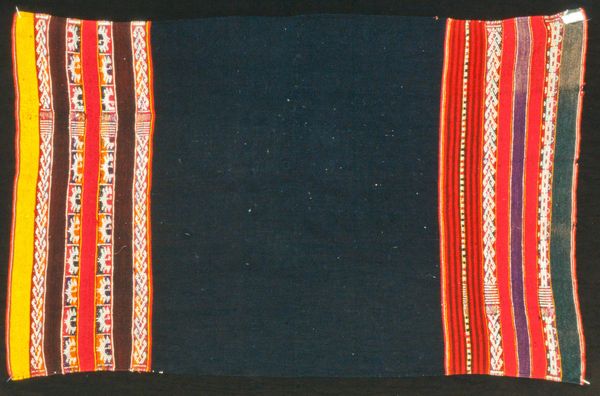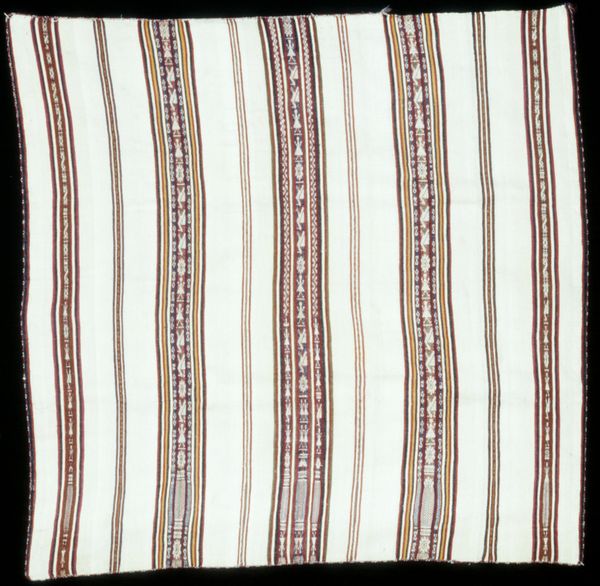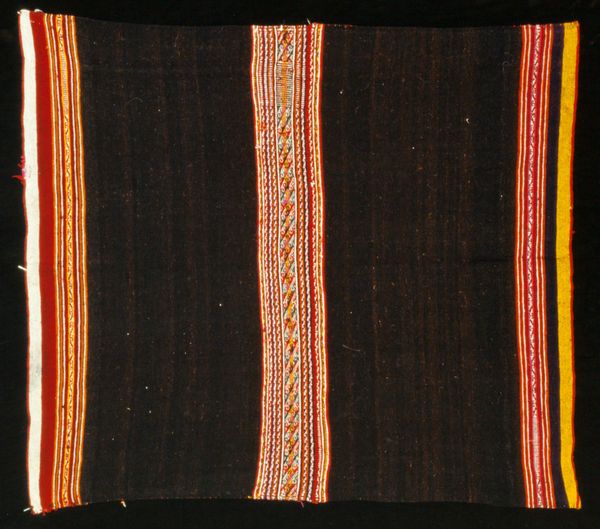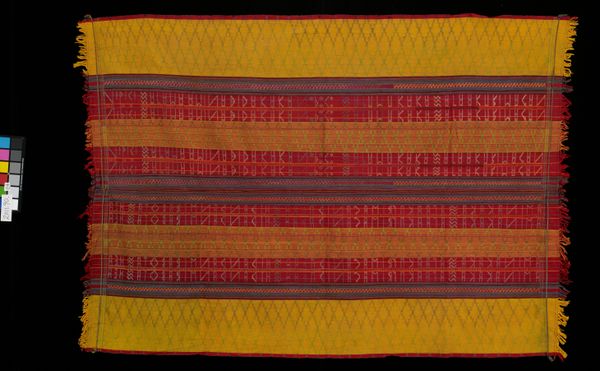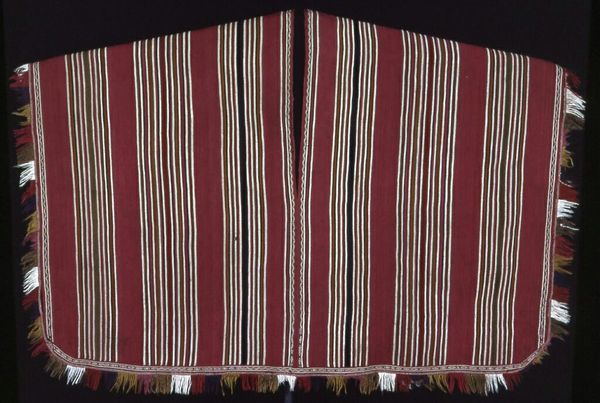
weaving, textile
#
natural stone pattern
#
weaving
#
textile
#
collage layering style
#
fashion and textile design
#
geometric pattern
#
abstract pattern
#
geometric
#
repetition of pattern
#
pattern repetition
#
textile design
#
imprinted textile
#
layered pattern
#
indigenous-americas
Dimensions: 56 1/4 x 47 1/4 in. (142.9 x 120.0 cm)
Copyright: Public Domain
This ceremonial overskirt was woven by Aymara people. Textiles have long served as vital markers of identity and status in Aymara communities, reflecting a rich cultural heritage. The aksu, traditionally worn by women, is more than just clothing; it's a canvas of symbols and meanings. The vertical stripes and intricate patterns woven into the fabric are not merely decorative; they communicate social standing, lineage, and regional identity. The Aymara people, who live in the highlands of the Andes, have a deep connection to the land. Their weaving traditions are passed down through generations. Examining the symbolism and techniques used in this aksu can tell us a lot about Aymara society. Historians consult a range of sources, from colonial records to contemporary ethnographic studies, to understand these objects. By looking at the aksu within its social context, we gain a richer understanding of Aymara culture and its role in shaping individual and collective identities.
Comments
minneapolisinstituteofart about 2 years ago
⋮
Textiles were the most important commodity in ancient Andean societies. They were an essential vehicle in representing and conveying regional culture and identity, as well as a tool for social and political relationships through gift and trade. Ceremonial skirts like this one were worn by women for special occasions, and because of their limited use and the general respect and care shown for textiles, many centuries-old garments remain. The elaborate patterns in Aymara weavings represent local design motifs and aesthetics. The weaver most likely chose the rhythmic geometric and organic designs based on the meaning they held and their visual appeal.
Join the conversation
Join millions of artists and users on Artera today and experience the ultimate creative platform.
